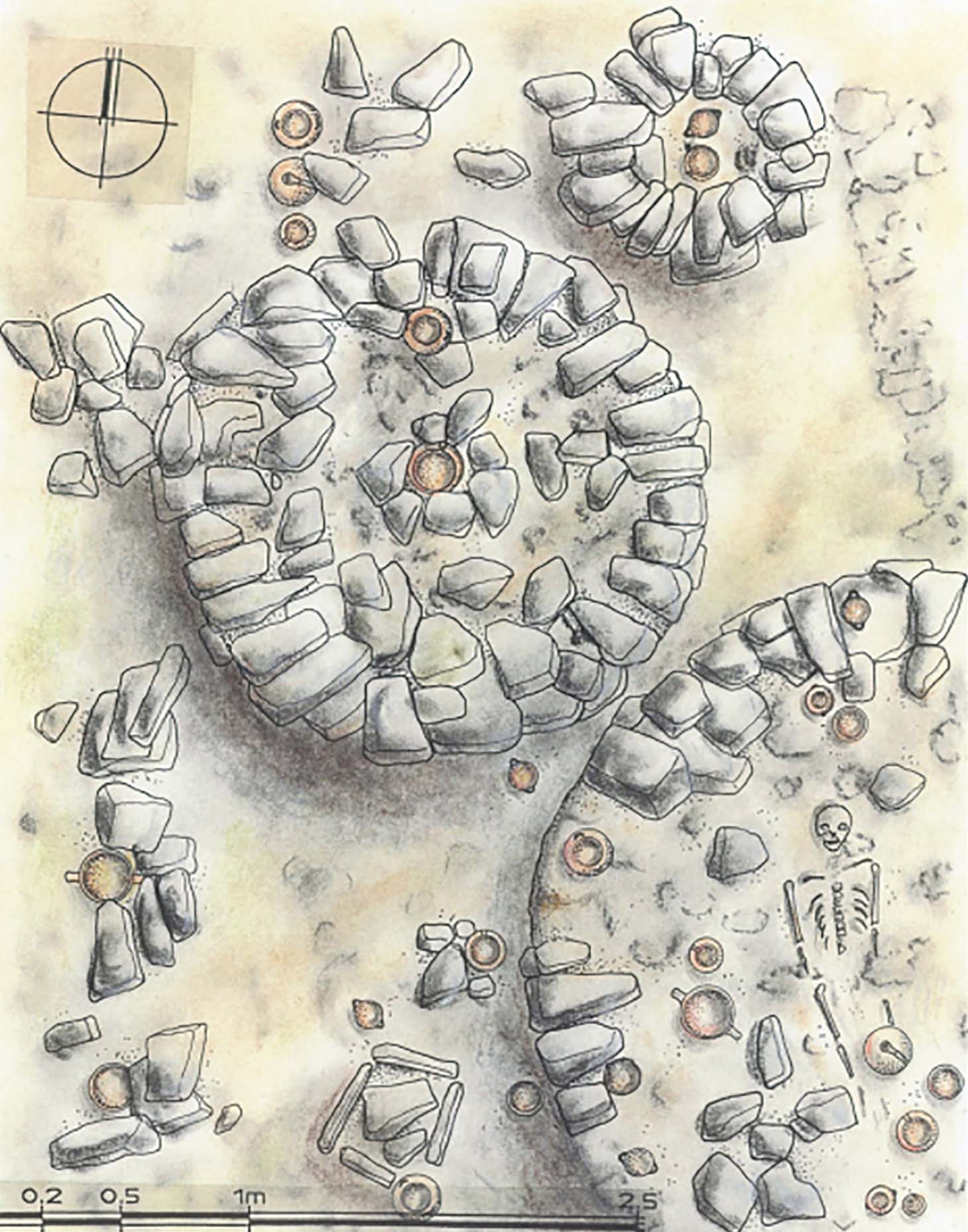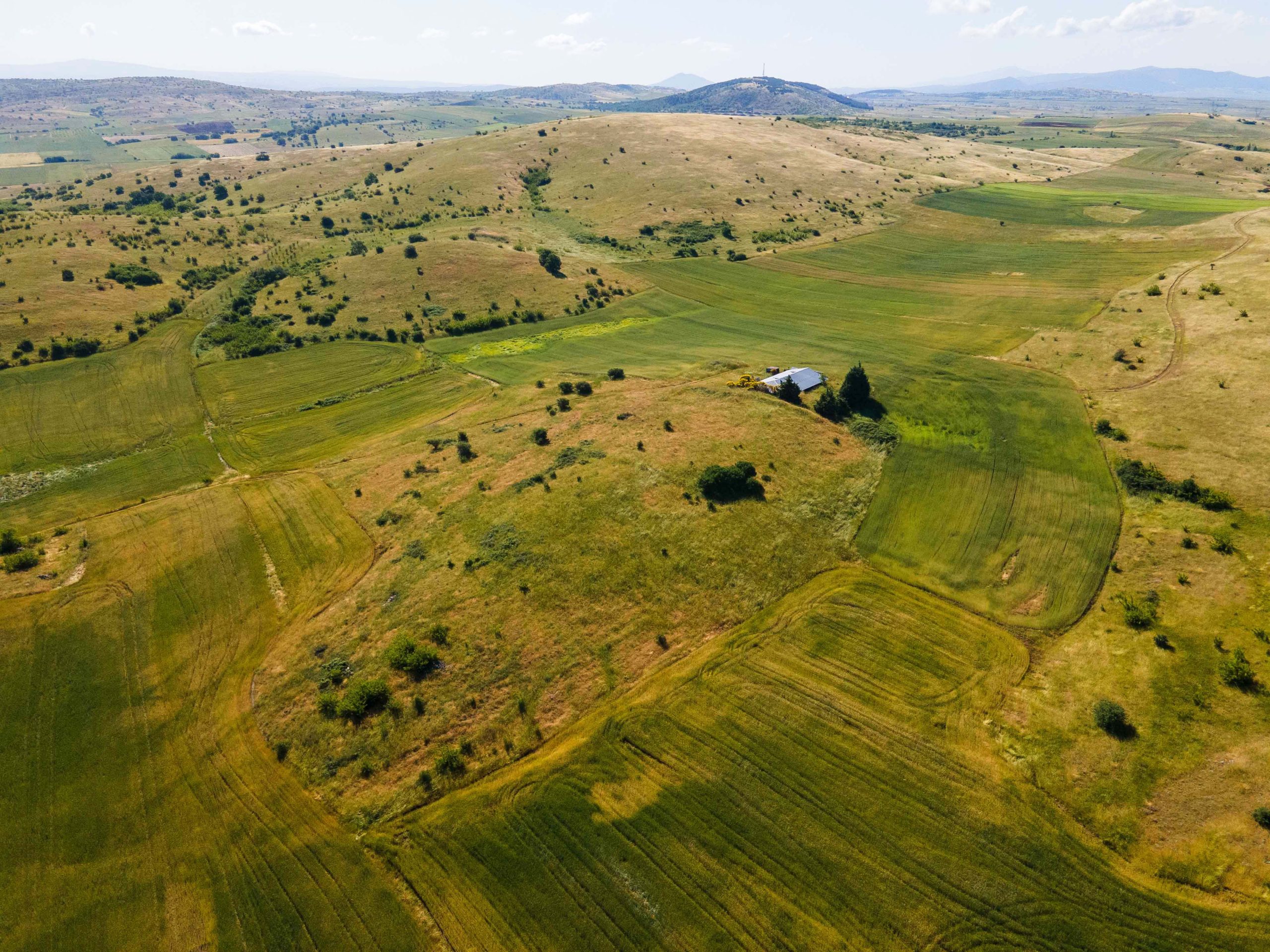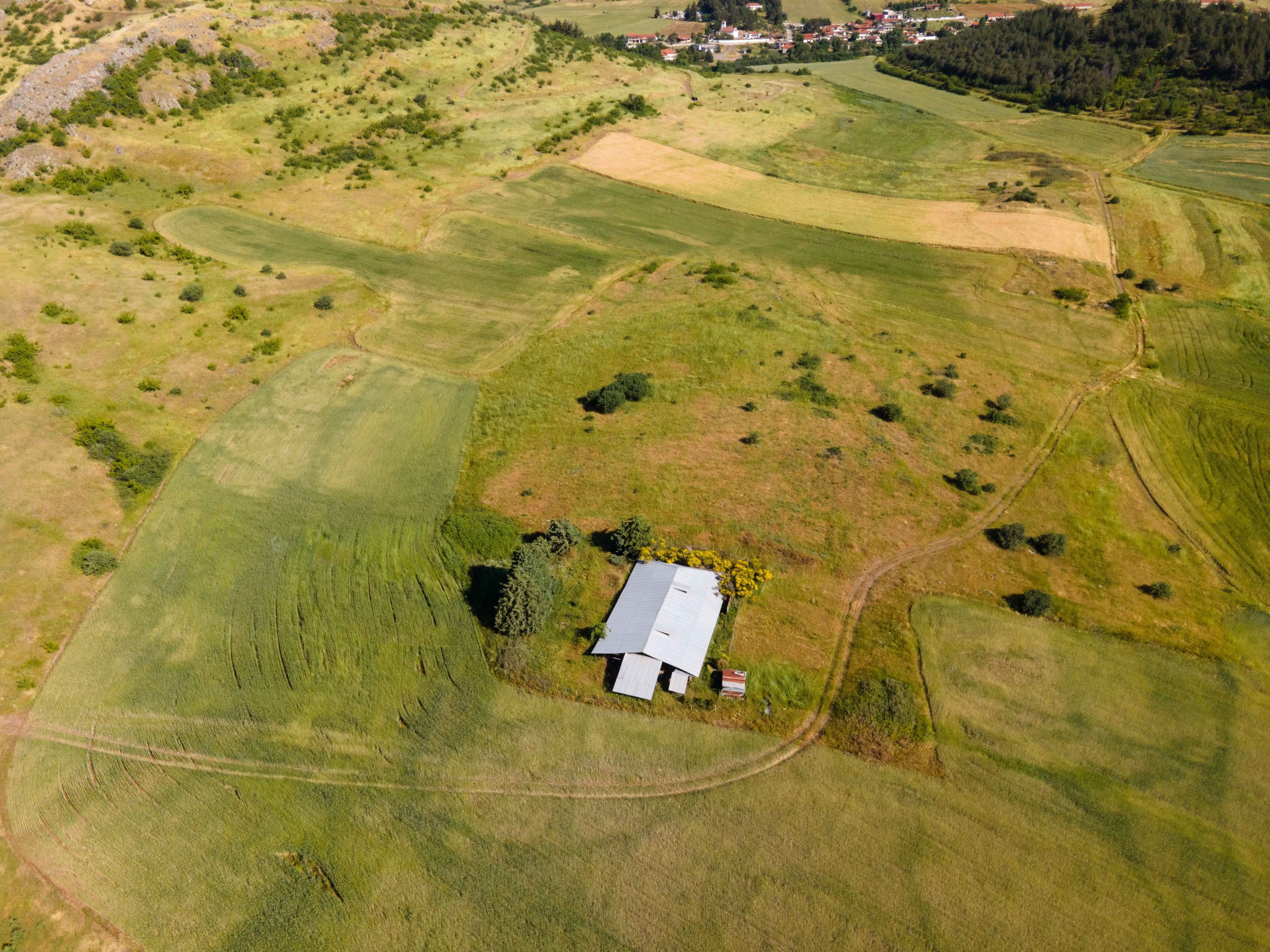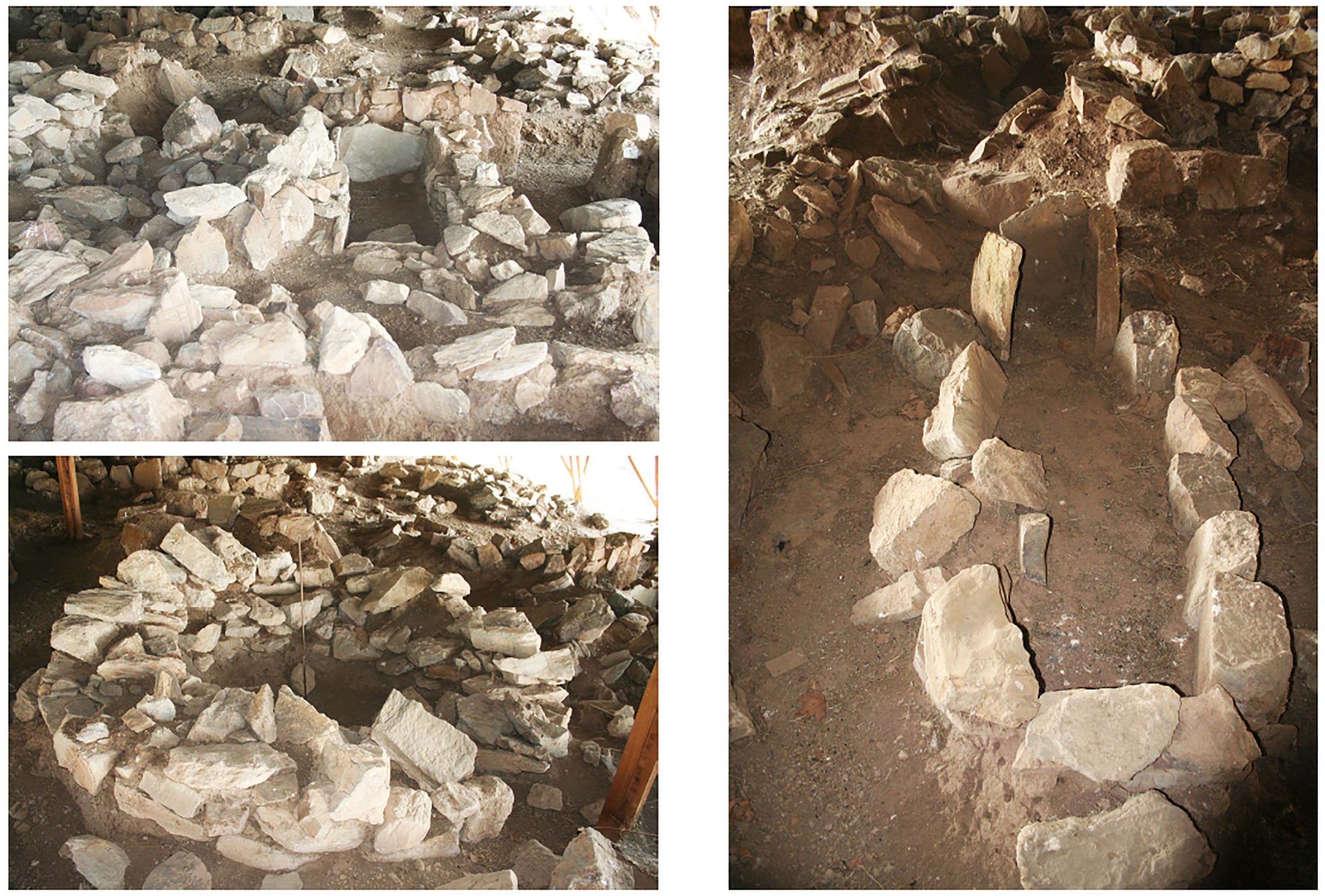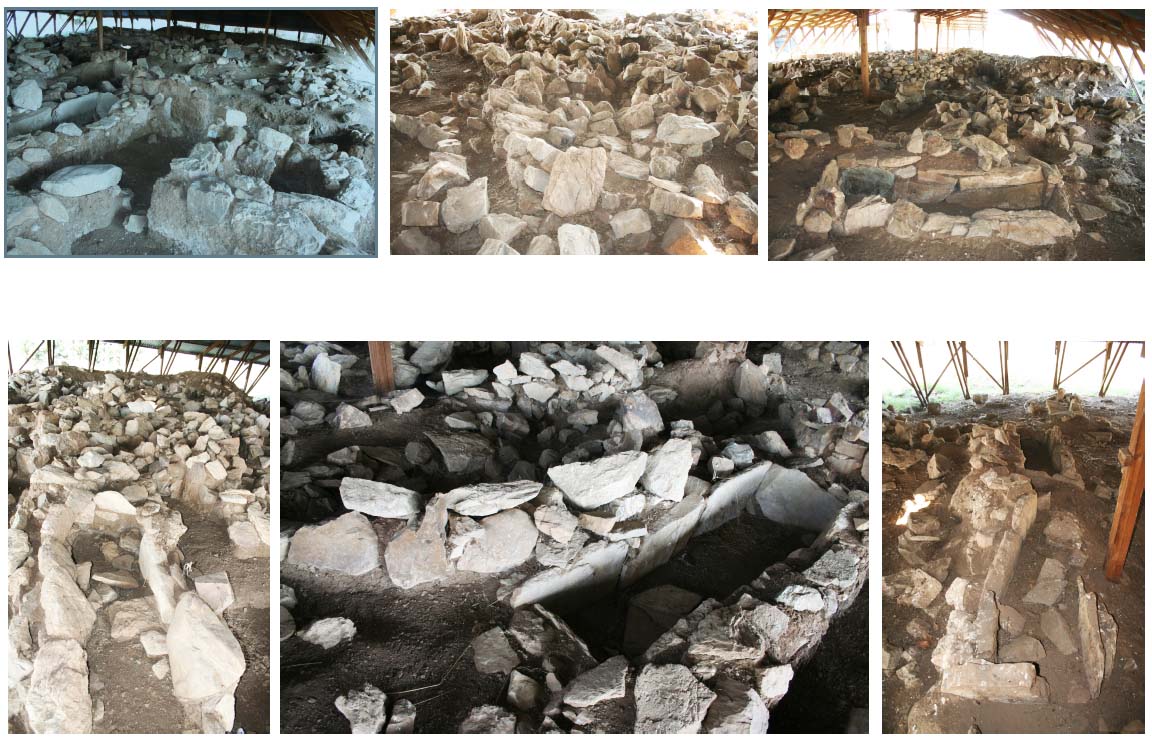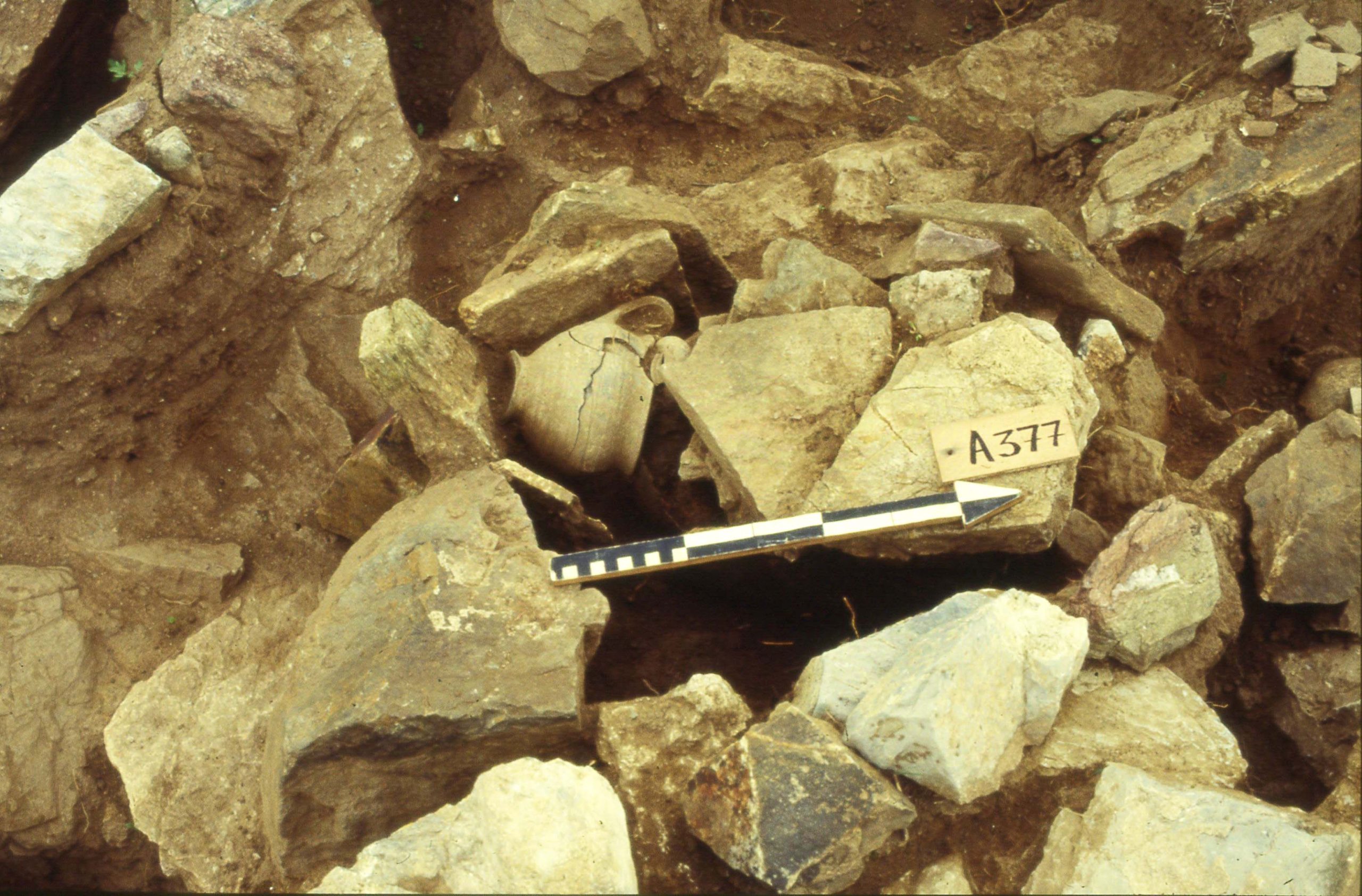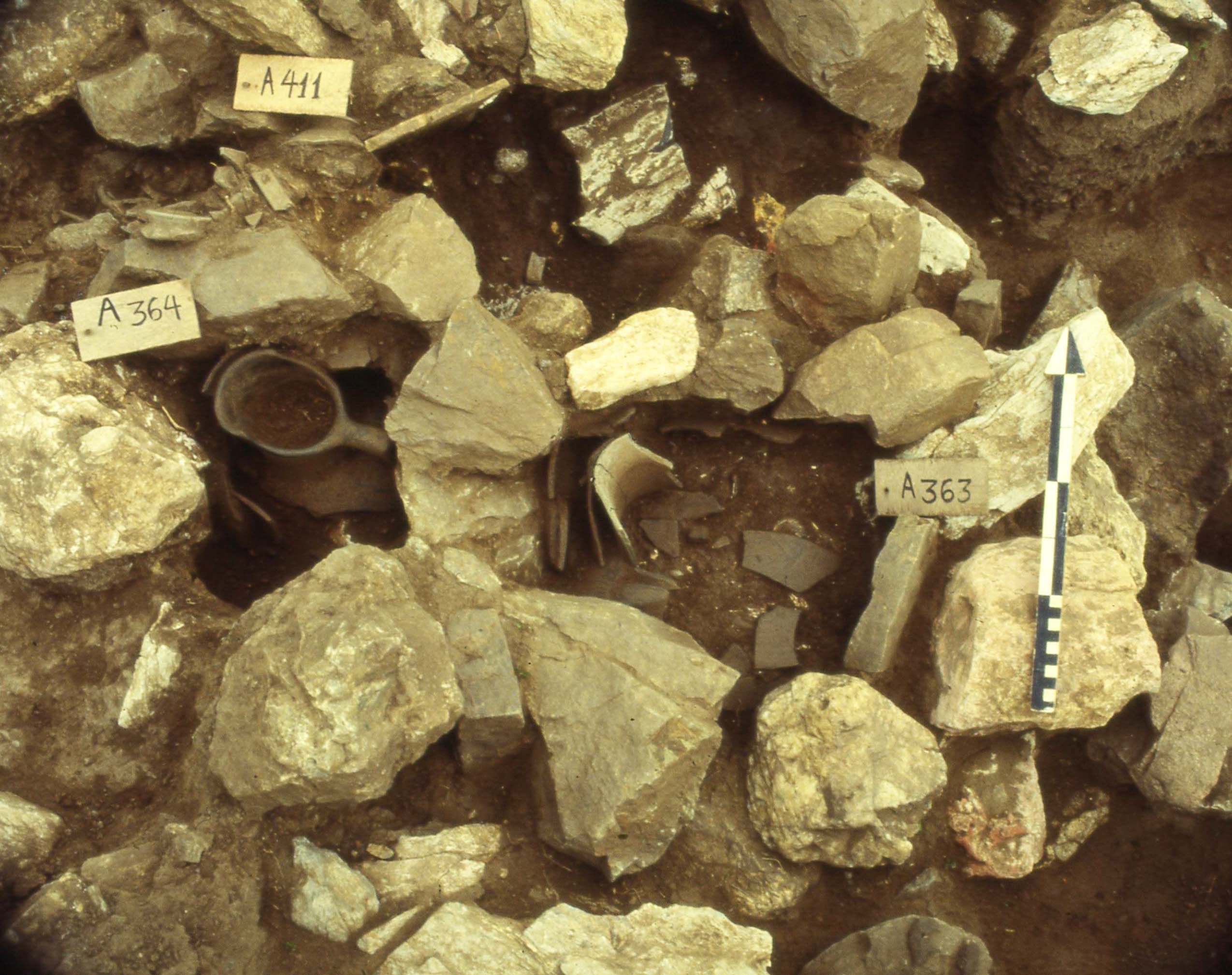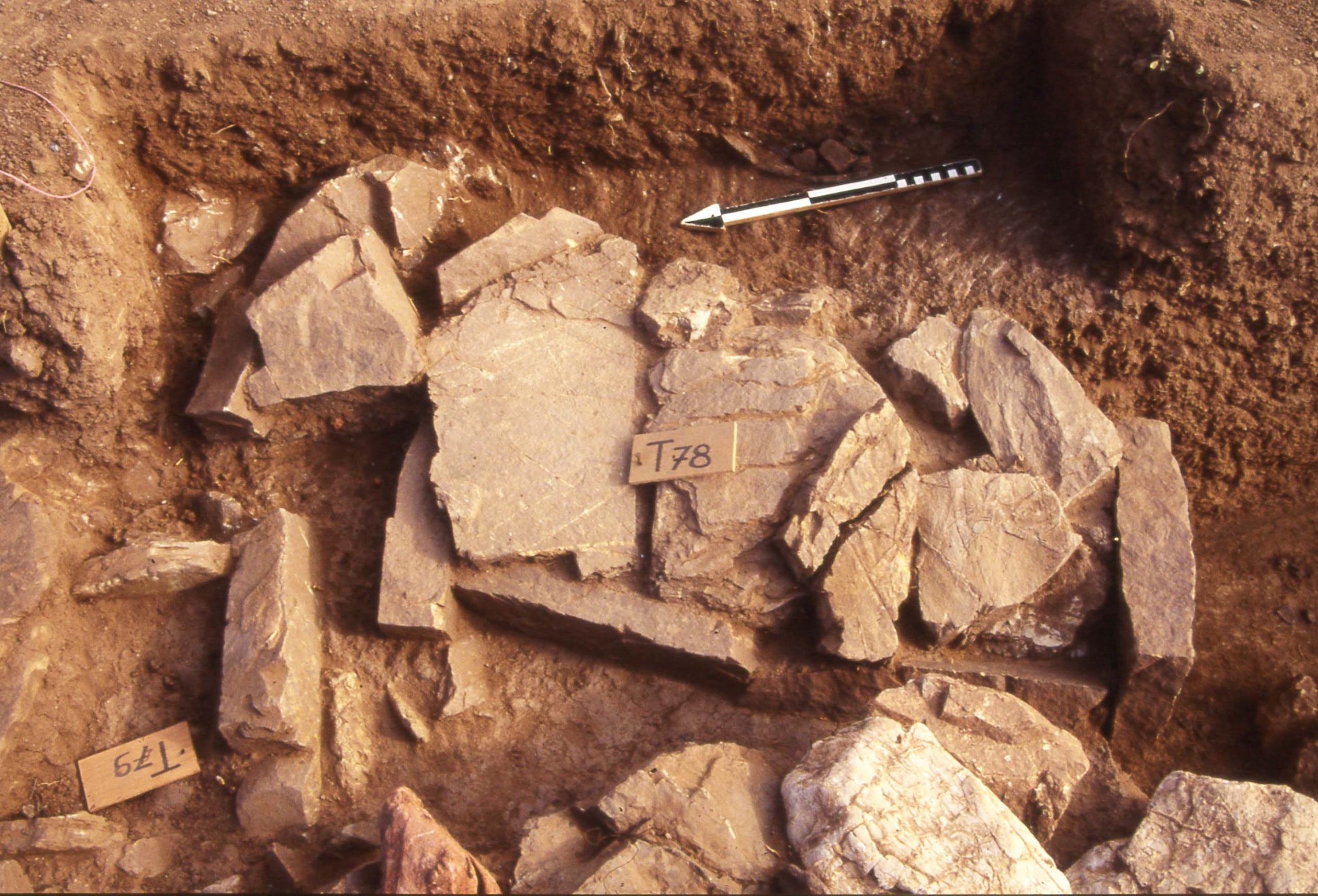This website uses cookies so that we can provide you with the best user experience possible. Cookie information is stored in your browser and performs functions such as recognising you when you return to our website and helping our team to understand which sections of the website you find most interesting and useful.
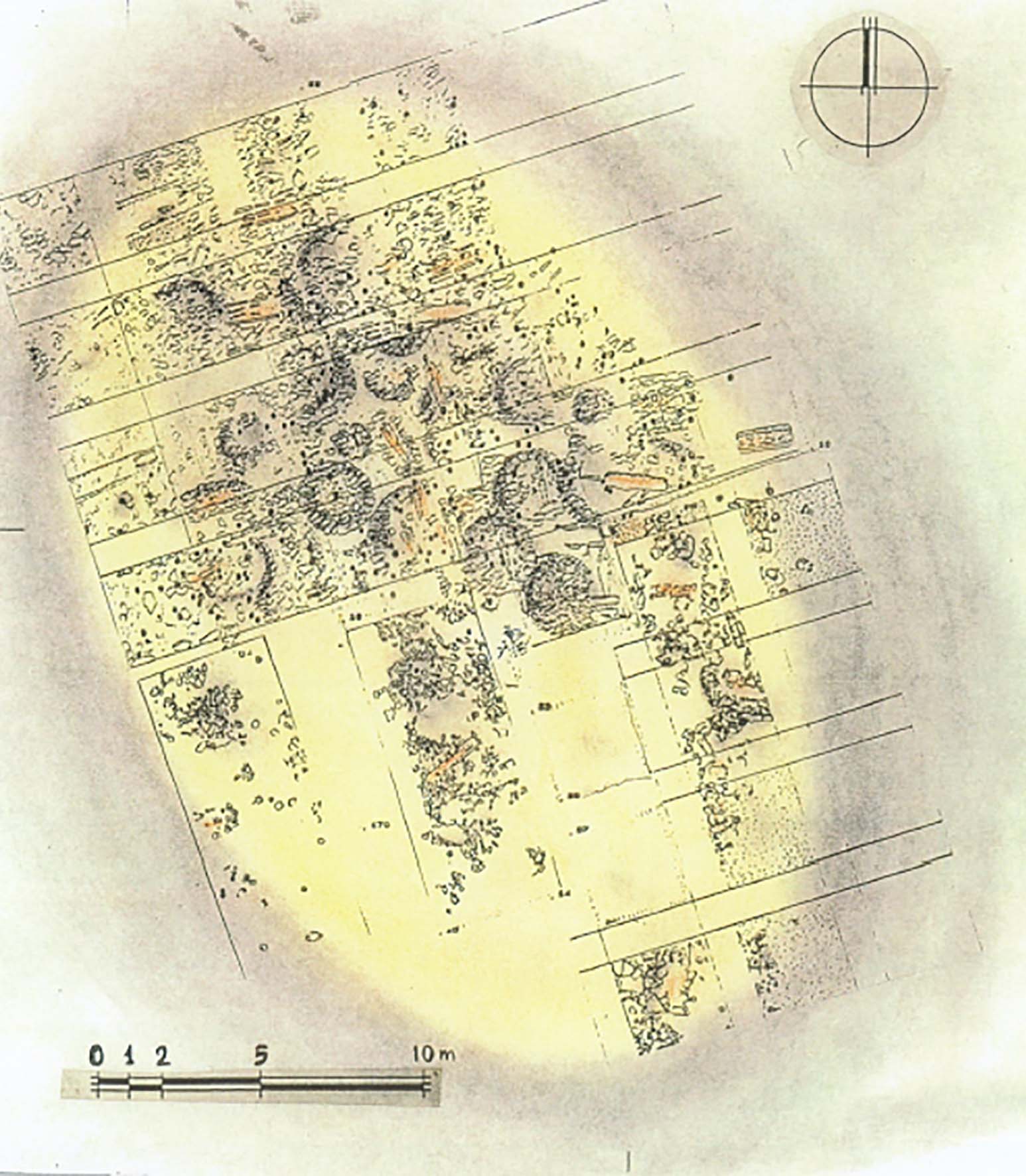
The Gynaikokastro tumuli
The tumuli cemetery in Palaio Gynaikokastro, dating to the Early Iron Age, was discovered in the 1980s and 1990s, as a result of rescue excavations conducted by the archaeologist Th. Savvopoulou. The archaeological investigation unearthed cremations in 542 cinerary urns, placed within circular precincts. The latter were covered by stone piles, possibly taking the form of tumuli.
Funerary goods – in accordance with the deceased’s gender – were deposited within the vases, the graves, and the pithoi, accompanying, thus, the dead to their eternal trip. Iron weapons, spearheads, swords, and small knifes were offered to men-warriors and bronze jewelry to women. The quantity and type of funerary goods probably echoes the financial and social status of the dead in their respective local societies. Noteworthy among the burial goods is the presence of double bronze axes and small pendants. Their iconic form has led researchers – in an attempt of interpretation – to ascribe to them not only a decorative but also religious, social or apotropaic symbolisms. Some graves have produced gold rhomboid foils with repoussé decoration, the so-called “mouth-pieces” or danakia, which were placed on the mouth of the dead. Further, 85 inhumations in cist tombs and pithoi were discovered.
